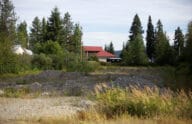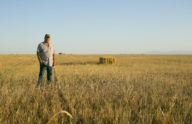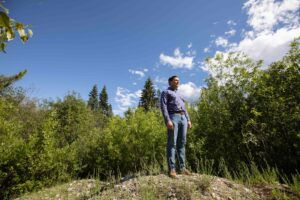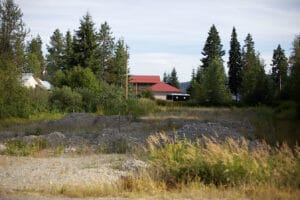Showdown at the Supreme Court
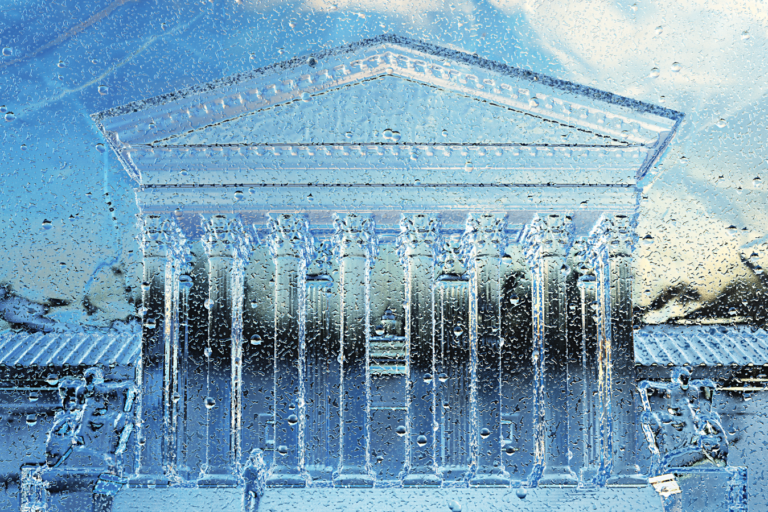
Monday October 3, 2022: The first spectator arrived at midnight. He brought a sleeping bag and an umbrella, then waited outside the Supreme Court all night while it drizzled on and off. Other spectators arrived between 2 and 6 a.m. By the time I arrived at the Supreme Court around 9:00 a.m., there was a line of people down the block, waiting in the cold.
It was the first time since the outbreak of COVID-19 that the public was allowed into the courtroom for oral arguments. Everyone in line was hoping to get a seat for Sackett v. EPA, the opening case of the new term—and new Justice Ketanji Jackson’s first appearance.
In front of the Court steps, a handful of environmentalist protestors took turns speaking from a podium. “Water knows no boundaries,” one speaker said, looking into a camera. “It’s like the very blood that runs through our veins.”
Another protestor started a chant: ‘When I say ‘clean,’ you say ‘water’! Clean! Water!”
Leading up to oral arguments
The Supreme Court hears roughly 70 cases each term, selected from 7,000 to 8,000 petitions submitted by attorneys across the country. This term, two of the cases on the Court’s docket are Pacific Legal Foundation cases:
But first, Sackett v. EPA, a case I’ve been working on since 2008.
I’ve argued at the Supreme Court only one other time and it was in this same case, ten years ago. We won unanimously then; but at that point we were simply arguing for the right to bring a challenge in the first place. In his 2012 Sackett I opinion, the late Justice Antonin Scalia (correctly) pointed out the Clean Water Act wasn’t designed for “the strong-arming of regulated parties into ‘voluntary compliance’ without the opportunity for judicial review.”
It’s like being in a play. There are huge velvet curtains hanging behind the bench, and right at 10:00 a.m. a bell rings and the curtain pulls back.
Sackett II would be more difficult. We’re trying to get the Court to clarify which wetlands are protected by the Clean Water Act: only wetlands with a surface connection to traditional navigable waters, as Justice Scalia held in his 2006 plurality opinion in Rapanos, or also even “soggy residential lot[s],” as the Ninth Circuit dubbed the Sacketts’ property.
A week before oral argument, I flew from my home in California to Washington, DC, for an intense week of final prep, including three moot courts where legal experts—most of them former Supreme Court clerks—took on the role of Justices and peppered me with questions.
I felt ready. But I still had trouble sleeping the night before.
At the Court on Monday morning, before arguments began, I spoke to an attorney in the case immediately following ours. He’s a former U.S. solicitor general at the Department of Justice and has argued dozens of cases at the Supreme Court. He told me he still gets nervous every time.
Nothing—no federal appellate court—is like the experience of arguing at the Supreme Court. The lectern where you stand is only three or four feet from the bench where the Justices sit. The bench curves around you and the Justices are spaced out so that you can’t look at all nine at once. They’re almost surrounding you.
It’s like being in a play. There are huge velvet curtains hanging behind the bench, and right at 10:00 a.m. a bell rings and the curtain pulls back. The Justices process in. As an attorney, your opening statement is almost like a soliloquy.
Except a soliloquy isn’t interrupted by questions.
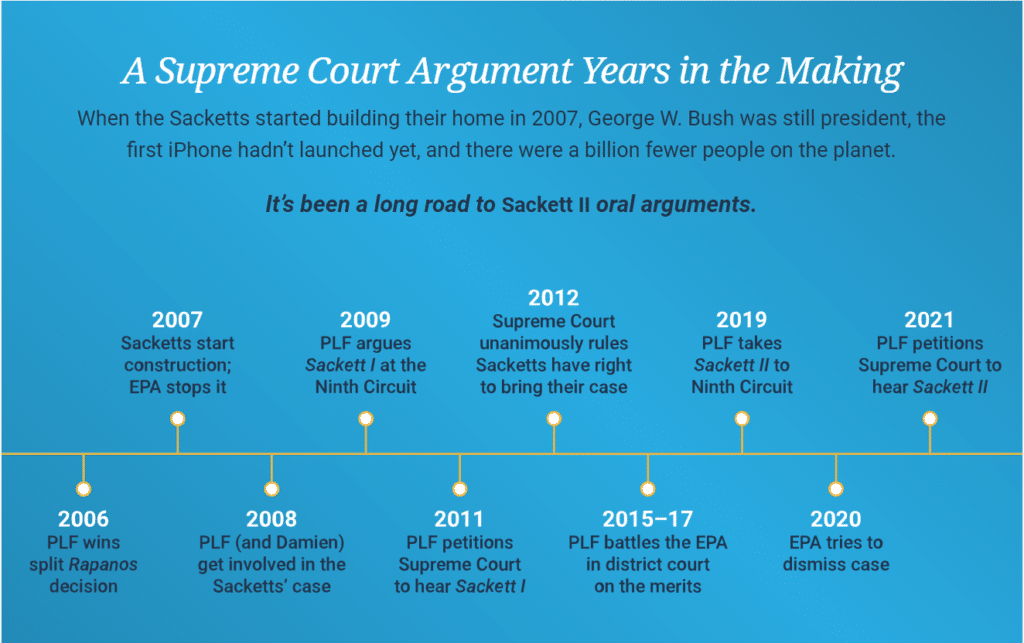
Is the Sacketts’ land ‘adjacent’ to the lake?
Oral arguments are scheduled to last an hour, with each side given 30 minutes.
Instead, it lasted almost two hours. That’s because of how many questions the Justices asked.
It quickly became clear that the Justices weren’t satisfied with the murky “significant nexus” test that the EPA currently relies on to claim jurisdiction over land like the Sacketts’.
“I… understand some of your points about the significant nexus test,” Justice Elena Kagan told me. “Is there anything in the middle?”
She and several others, including Justices Brett Kavanaugh and Amy Comey Barrett, seemed eager to develop a new test for the EPA’s authority over wetlands—a test based on whether a wetland is “adjacent” to a traditional navigable water.
There is a 1977 amendment to the Clean Water Act that briefly mentions “wetlands adjacent” to navigable waters. The EPA has largely focused its own arguments elsewhere, but several Justices asked me about this phrase. Justice Kagan suggested the line “means more than you think.”
One problem, of course, is that no one in the room seemed to agree on exactly what “adjacent” means. We debated the definition for so long that at one point Justice Clarence Thomas said, “I don’t want to use the term ‘adjacent.’ I’m done with that word.”
I maintained that when talking about geographic features, adjacent means touching. If someone says they have two adjacent parcels of land, that clearly means the lots are touching.
But Justice Sonia Sotomayor argued Congress would have used the word “abutting” if that’s what they meant. She said the Clean Water Act includes the word “abutting” elsewhere in the statute, and when I respectfully disagreed, she said, “Oh, it actually does. Assume it does.” Meanwhile, unbeknownst to everyone in the courtroom (who surrender their phones upon entry), law professor Jonathan Adler was fact-checking Justice Sotomayor on Twitter: Abutting does not, in fact, appear in the statute.
Bear in mind: The Sacketts’ property is 300 feet from Priest Lake. Technically the EPA isn’t arguing the property is adjacent to the lake, but rather that it’s adjacent to a ditch 30 feet away, which runs into a creek a few thousand feet west of the site, which later drains into the lake. Justice Neil Gorsuch called that theory of adjacency “kind of a daisy wheel spun out from the lake” and “rather complicated when one looks at the map.”
At one point, the EPA’s counsel suggested that you could argue the Sacketts’ lot is adjacent to the lake 300 feet away. “They” (meaning, the EPA) “do not think 300 feet is unreasonable for adjacency,” the counsel said.
Justice Gorsuch pounced on that. “So how about 3,000 feet?” he asked. “Could be?”
“I don’t—I don’t know the answer to that, Justice Gorsuch,” the counsel replied.
Justice Gorsuch pressed. “Could it be three miles?”
They went back and forth like that a few times, with the EPA’s counsel unwilling to put a definite number on how far a property can be from a waterway and still be considered adjacent.
Then Justice Gorsuch hit an excellent point: “If the federal government doesn’t know, how is a person subject to criminal time in federal prison supposed to know?”
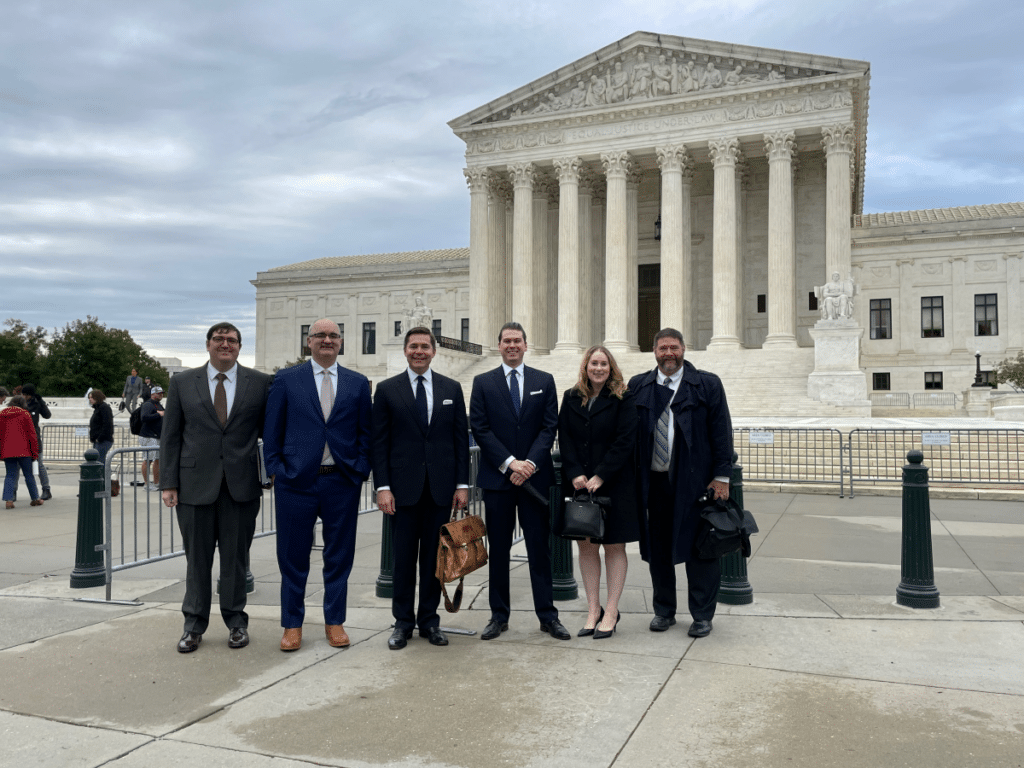
Definition of waters
In another interesting exchange, Justice Samuel Alito asked the EPA’s counsel, “What is your understanding of the term ‘waters’?”
This was the government’s response:
We think it—so our understanding of it is reflected in the agency’s regulations, which have for 45 years spelled out the different sorts of waters that are covered. I think, if I were to try—going to reduce it to a phrase, it would be geographic features that are characterized by the presence of waters.
That definition could potentially include huge swaths of private property, as Justices Barrett and Thomas noted. Justice Thomas asked about where he grew up in the low country of Georgia, where most of the land is marshy. Justice Barrett asked about where she grew up in New Orleans, where “the whole thing is below sea level.”
“We have no basements because, if you dig far enough in anybody’s yard, you hit water,” Justice Barrett said. Then she asked: Does that mean that anyone who builds a backyard pool in New Orleans needs to get a Clean Water Act permit?
In other words: There needs to be a limiting principle. The Justices had a hard time getting the EPA’s counsel to draw a bright line. “The agencies have told me they do not draw bright-line rules,” the counsel said at one point.
Water goes everywhere eventually
Ultimately, this case is a battle of different versions of textualism: our idea of textualism versus a different kind of textualism that has become prevalent on the left—a textualism informed by purpose.
Just because the EPA has been misinterpreting its authority for decades doesn’t mean the Court should endorse its misinterpretation.
Several textualist Justices on the Court, including Justice Kavanaugh, seemed to be searching for something in the text of the Clean Water Act on which to form a “third test” that’s more environmentally sensitive than Justice Scalia’s test in Rapanos—which is why they seized on the word adjacent in the 1977 amendment.
Justice Kavanaugh asked me a surprising question: He asked why the Court shouldn’t stick with how “every administration since 1977” has interpreted the CWA.
I gave a textualist answer: I spoke about the ordinary meaning of the words in the statute. But here is, perhaps, a better answer: Justice Scalia wrote eloquently about the “damage done to our separation-of-powers jurisprudence” when the Supreme Court embraces “the adverse-possession theory of executive power.”
In other words, just because the EPA has been misinterpreting its authority for decades doesn’t mean the Court should endorse its misinterpretation.
The Clean Water Act is a law that can sweep very broadly. It’s hard to know whether you’re regulated, and if you guess wrong—for doing otherwise-normal activity, like building a house—it can be catastrophic. And there aren’t very many statutes out there that have that potent brew of huge penalties, lack of notice, and the potential to regulate very normal, everyday conduct. That makes it scary.
There’s a good reason PLF has been involved in the Sackett case since 2008: If the EPA can swoop in and block housing on a residential lot 300 feet from a lake, how many millions of acres around the country will fall under their control? Will the EPA stop construction in rural Georgia next? In New Orleans?
Without clear Court guidance on the Clean Water Act, the federal government’s authority over private property is virtually limitless. As Chief Justice John Roberts said at one point during oral arguments, “Water goes everywhere eventually.”
The Supreme Court will likely give us its decision in the spring.
This article first appeared in the winter 2022 edition of Sword&Scales.



